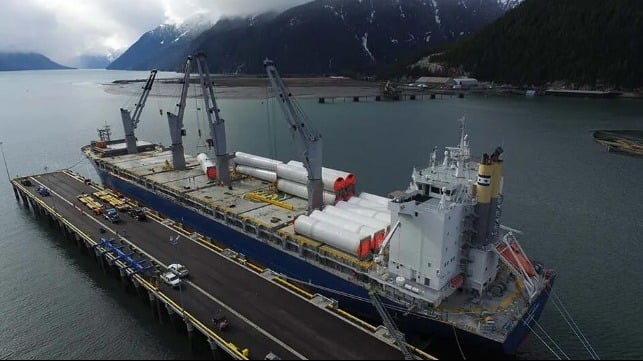Costs, Availability, and Regulation are Challenges to Ammonia Refit

A first-of-its-kind study concludes that converting existing ships to ammonia-fueled operations is possible but that there are several difficult hurdles to overcome. Led by Norway’s Grieg Star with 21 organizations including Yara and the Norwegian Maritime Authority, the report focuses on the issues for the technical retrofit as well as the issues surrounding the availability of green ammonia, the operational risks, and financial costs.
The study looked at a Grieg Star L-Class open hatch bulker. Built a decade ago, the vessels are 50,761 dwt with a length of 670 feet. They assessed the technical and commercial feasibility of retrofitting one of the vessels for green ammonia operations in a trans-Atlantic route. The issues identified for exploration included the key barriers, risks, and possibilities as well as the business case for the conversion.
“The main barrier today is the combination of high retrofit investment costs, lack of availability of competitively priced green ammonia, and unclear effects of regulatory frameworks,” they write in the report’s conclusion. They said that the elements perceived as challenges however have turned out not to be barriers or present major risks for moving forward with a retrofit project.
They concluded that modifications can be done to a vessel within existing regulations. However, they found that the required modifications are more extensive than initially anticipated and that the complexity of the refit would be significant.
“We still see green ammonia as one of many possible fuels for shipping in the future,” said Atle Sommer, Managing Director of Grieg Star. “Currently, it seems more viable for multifuel-ready new buildings than for retrofitting current ships. The study also shows that we need changes on a political and regulatory level to make the change for the existing world fleet.”
Like other initiatives working toward the green transition, they also highlighted the critical role the regulatory environment along with the availability of green ammonia fuel will have on the retrofits. Without the stability of green ammonia availability/pricing for the maritime sector (potentially green corridors) and, even more importantly, stable framework conditions, financing such a venture is not viable, even with significant soft project funding, the report concludes.
The report, which was initiated and facilitated by the Norwegian Green Shipping Programme, also acknowledges that there are significant barriers and risks regarding safety, local regulations, engine technology, emissions, availability, and financing before a viable investment case can become a reality. In addition, their financial model is limited to a breakeven calculation based on the availability of competitively priced green ammonia and does not include return on equity.

that matters most
Get the latest maritime news delivered to your inbox daily.
“The transformation our industry is grappling with now demands knowledge-sharing and transparency. We hope our findings can help other companies,” said Sommer.
Grieg Star published the complete 82-page report on its website.
